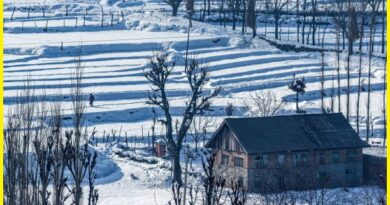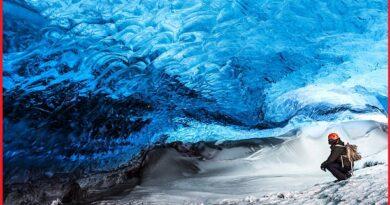Bhutan’s Ura Valley- A Sanctuary of Scenic Splendor
Ura valley Bhutan
The Ura Valley is a picturesque and culturally rich valley located in the Bumthang district of Bhutan. The Valley is situated in the eastern part of Bhutan, nestled amidst the Himalayan mountains, offering stunning views of snow-capped peaks, lush greenery, and traditional Bhutanese architecture. The Ura Valley is renowned for its breathtaking natural beauty, characterized by verdant forests, rolling hills, and pristine landscapes. Visitors can explore the valley’s picturesque surroundings, trek along scenic trails, and enjoy the tranquil ambiance of the Himalayan countryside.
The Ura Valley is home to several cultural attractions and traditional Bhutanese villages. Visitors can immerse themselves in the local culture, interact with the friendly residents, and experience the traditional way of life in rural Bhutan. One of the highlights of the Ura Valley is the Ura Yakchoe Festival, a vibrant religious festival celebrated annually in the village of Ura. The festival features colorful masked dances, traditional rituals, and religious ceremonies, offering visitors a unique insight into Bhutanese culture and spirituality.
Ura Yakchoe Festival
The Ura Yakchoe Festival is a vibrant religious celebration held annually in the Ura Valley of Bhutan. The Ura Yakchoe Festival takes place in the Ura Valley, renowned for its picturesque landscapes, traditional villages, and rich cultural heritage.
The festival usually occurs in the spring season, typically during the fourth month of the Bhutanese lunar calendar, which corresponds to April or May in the Gregorian calendar. The duration of the festival may vary, but it usually spans several days, with each day featuring unique rituals and performances. The Ura Yakchoe Festival is deeply rooted in Bhutanese religious traditions and Buddhist culture. The festival is dedicated to Yakchoe Jampa, a revered deity associated with compassion, wisdom, and spiritual blessings. Devotees believe that attending the festival and witnessing the sacred rituals can bring good fortune, prosperity, and spiritual merit.

The Ura Yakchoe Festival features colorful masked dances, traditional rituals, and religious ceremonies performed by monks and lay performers. The highlight of the festival is the cham dances, which depict stories from Buddhist mythology, legends, and religious teachings. The elaborate costumes, intricate masks, and graceful movements of the dancers captivate the audience and evoke a sense of spiritual devotion and reverence.
Community Gatherings-The Ura Yakchoe Festival is not only a religious event but also a social and cultural celebration that brings together communities from across the region. Locals and visitors gather to witness the festivities, participate in religious rituals, and enjoy traditional Bhutanese music, dance, and cuisine. The festival provides an opportunity for cultural exchange, camaraderie, and mutual respect among people of diverse backgrounds.
Prayer Offerings and Blessings- During the Ura Yakchoe Festival, devotees offer prayers, light butter lamps, and offerings to the deity Yakchoe Jampa, seeking blessings for health, happiness, and prosperity. It is believed that the prayers and offerings made during the festival can dispel obstacles, purify negative karma, and generate positive energy for the community and the world.
Tourism and Heritage Conservation- The Ura Yakchoe Festival has become a significant tourist attraction in Bhutan, drawing visitors from around the world to experience the country’s rich cultural heritage and spiritual traditions. The festival also plays a crucial role in preserving and promoting Bhutanese cultural identity, heritage, and values for future generations.
Also Read- A Super Fantasy Destination- Paro Taktsang Bhutan
Ura Valley trekking
Trekking in the Ura Valley offers adventurers an opportunity to explore the pristine landscapes, rich cultural heritage, and tranquil surroundings of one of Bhutan’s most scenic regions. Trekking in the Ura Valley allows travelers to immerse themselves in the breathtaking natural beauty of Bhutan’s mountainous terrain. The valley is adorned with verdant forests, rolling hills, cascading waterfalls, and meandering streams, offering stunning vistas at every turn.
Ura Valley trekking provides opportunities to explore traditional Bhutanese villages, interact with local communities, and experience the unique culture and way of life in rural Bhutan. Travelers can visit ancient temples, monasteries, and dzongs (fortresses), and learn about Bhutan’s rich spiritual heritage and religious traditions.
There are various trekking routes available in the Ura Valley, ranging from easy day hikes to multi-day treks that traverse the region’s diverse landscapes and ecosystems. Popular trekking routes include the Ura Valley Trek, which takes trekkers through picturesque villages, rhododendron forests, and alpine meadows, offering panoramic views of the surrounding mountains and valleys.
Wildlife and Nature
The Ura Valley is home to a diverse range of flora and fauna, including rare and endemic species of plants and animals. Trekking enthusiasts may encounter wildlife such as Himalayan blue sheep, red pandas, musk deer, and a variety of bird species during their trekking adventures.
Camping and Accommodation
Trekking in the Ura Valley often involves camping under the stars amidst the pristine wilderness of the Himalayas. Travelers can also stay in traditional guesthouses, homestays, or eco-lodges in the local villages, where they can experience Bhutanese hospitality and cuisine.
Season and Weather
The best time for trekking in the Ura Valley is during the spring (March to May) and autumn (September to November) seasons when the weather is mild, and the skies are clear. Winter trekking is also possible, but temperatures can be cold, and snowfall may occur at higher elevations.
Overall, trekking in the Ura Valley offers a memorable adventure that combines awe-inspiring natural beauty, cultural immersion, and spiritual exploration in the heart of the Himalayas.
Yak Herding
The Ura Valley is known for its yak herding tradition, and visitors may encounter yak herders grazing their herds in the picturesque alpine meadows surrounding the village. Yaks are an integral part of Bhutanese culture and economy, providing milk, meat, and wool to local communities. Yaks hold significant cultural and economic importance in Bhutanese society. They are revered animals that feature prominently in religious rituals, festivals, and traditional ceremonies. Yaks symbolize strength, resilience, and spiritual purity in Bhutanese culture.
Traditional Architecture
The villages in the Ura Valley are characterized by traditional Bhutanese architecture, with intricately designed wooden houses, colorful prayer flags, and ornate monasteries dotting the landscape. Visitors can explore the villages, visit ancient temples and monasteries, and learn about Bhutan’s rich cultural heritage.

How To Reach Ura Valley
Reaching the Ura Valley in Bhutan involves a combination of travel by air and road, followed by trekking or driving to the valley itself.
International Travel: If you’re traveling from outside Bhutan, you’ll typically arrive at Paro International Airport, the country’s main international airport. There are flights to Paro from select cities in neighboring countries like India, Nepal, Thailand, and Singapore.
Travel to Bumthang: The Ura Valley is located within the Bumthang district in central Bhutan. To get to Bumthang, you can either take a domestic flight from Paro to Bathpalathang Airport in Bumthang (if available) or travel overland by road.
Overland Travel: Traveling by road from Paro to Bumthang involves a long journey through scenic mountain roads. The distance is approximately 270 kilometers, and the journey can take around 8-10 hours by car or bus, depending on road conditions and stops along the way.



